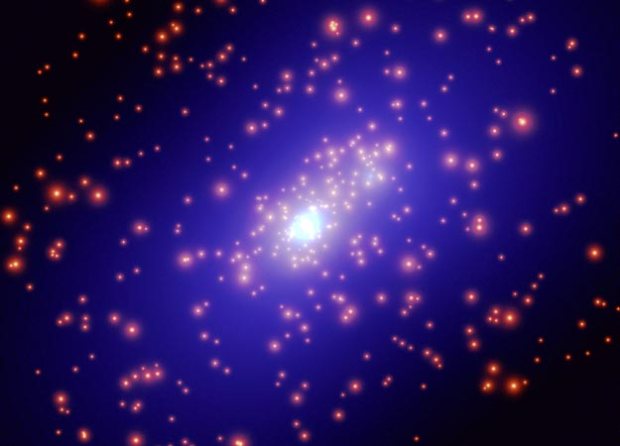Milky Way is the galaxy which houses the solar system in which we reside. This pale blue dot called Earth inhabits billions of people. But just by thinking that there could be many more galaxies makes Earth’s inhabitants all the more minuscule. Let us enter the world of galaxy clusters which contain hundreds to thousands of galaxies bound together by gravity.
The centers of rich clusters of galaxies contain the densest concentrations of matter in the universe. They’re also among the most violent places we know of.
As time rolls on and large galaxies swarm around meeker ones, mergers take place. Big galaxies grow larger by eating the tadpole galaxies. As this happens, worlds are torn apart, stars shredded, and gas clouds compressed into reckless new throes of star formation.
We live in a relatively quiet corner of the Milky Way Galaxy. By contrast, the centers of rich galaxy clusters are the universe’s most chaotic locations, constantly bustling with activity.
Until recently, astronomers thought they understood how galaxy clusters form. As matter collapses inward, pulled by gravity, groups of galaxies and clumps of matter crush together. The monsters of the scene, the big galaxies, fall toward the center, where the most mass resides. Hot gas in the cluster core loses energy and cools by emitting X-rays. As the gas inside the cluster cools, it also contracts.
..the mysterious heat source inside galaxy clusters are jets from active galaxies powered by supermassive black holes.
Astronomers dubbed this contracting gas a cooling flow. Up until 2006, the idea had been gospel since first proposed in 1977. But galaxy clusters have thrown astronomers a few surprises. One of the theorists who came up with the cooling-flow model, Paul Nulsen of the Harvard-Smithsonian Center for Astrophysics, says, “We now think it’s almost completely wrong.”
Researchers are now focusing on a model where more complex flows drive the formation and evolution of galaxy clusters. But gas cooling remains an important feature of the latest models. The trouble is, astronomers just don’t know what’s heating the gas. X-ray observations suggest that a vast amount of cool gas should be produced in the cores of galaxy clusters each year. This should lead to massive episodes of star formation.
Galaxy C153, illustrated here, is disintegrating as it ploughs through space. As the galaxy speeds through the gas in a large galaxy cluster, it loses much of its own gas.

“But when we measured rates of star formation,” says Brian McNamara of Ohio State University, “we were getting 10 to 20 solar-masses a year or less.” So, what could be hiding in the cool gas? Several years ago, McNamara uncovered a clue in the distant galaxy cluster Hydra A, some 840 million light-years away. Using NASA’s Chandra X-ray Observatory, he showed that powerful jets heated the surrounding gas.
Each of these voids was roomy enough to house 600 Milky Ways.
In 2005, McNamara and a group of collaborators again used Chandra, this time, to image X-ray emission from a very distant cluster, MS 0735.6+7421, which lies 2.6 billion light-years away in Camelopardalis. McNamara and his team found two gigantic cavities within the cluster. Each of these voids was roomy enough to house 600 Milky Ways. The cavities were expanding away from a supermassive black hole.
The team calculated that the energy required to displace this gas was some 1061 ergs — equivalent to the energy released by 10 billion supernovae. This was the largest single eruption astronomers have ever recorded. So, it appears the mysterious heat source inside galaxy clusters are jets from active galaxies powered by supermassive black holes. But the mystery lingers — jet luminosities don’t exactly match the clusters’ X-ray cooling rates.
The center of galaxy cluster Abell 1689 appears chaotic thanks to a dense thicket of stars and dust shed by its multitude of whirling galaxies.

So, while the whole picture of galaxy cluster heating and cooling is becoming clearer, it’s a long way from being solved. What astronomers do know is that massive galaxy clusters remain among the cosmos’ most energetic spots.
-end-



































This is way more then the human being can understand. Take the pictures from the national Geographs pictures showing wear earth is projected to be in this “heaven” then you have a unbealival story to put you to sleep at night.